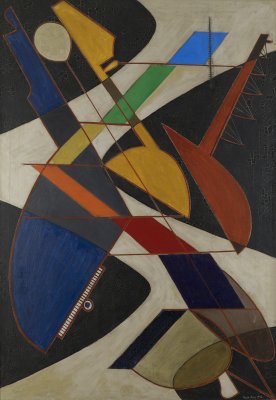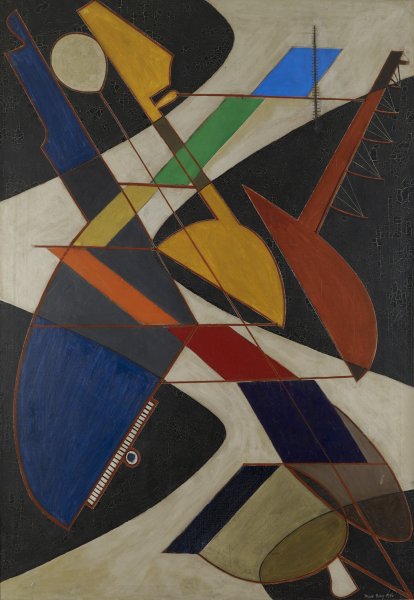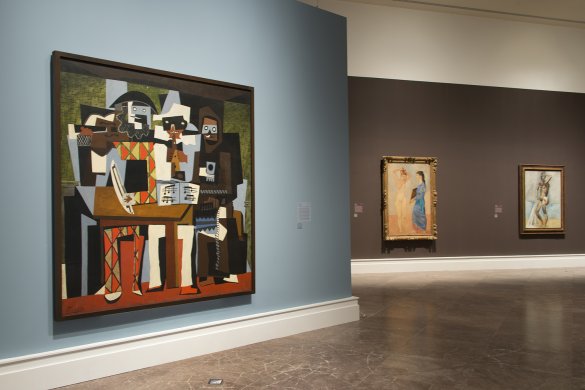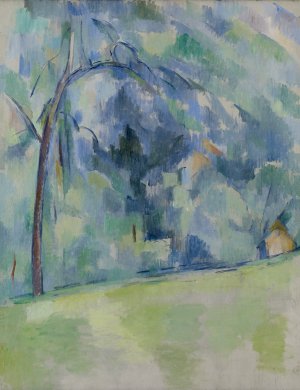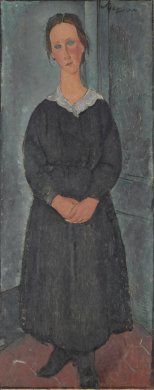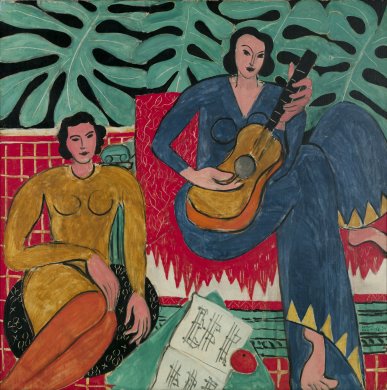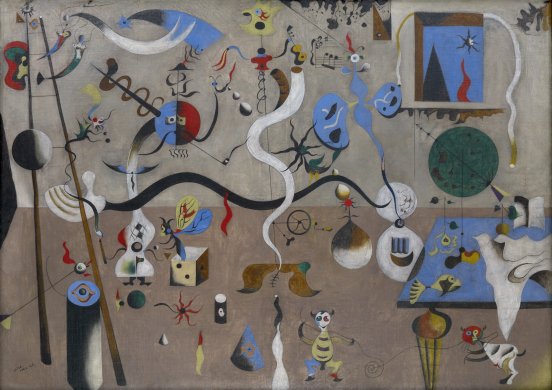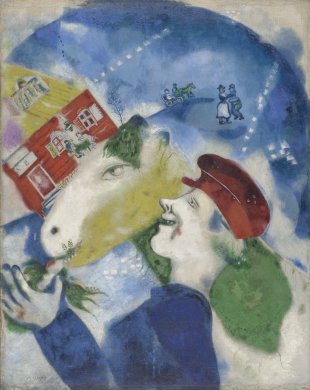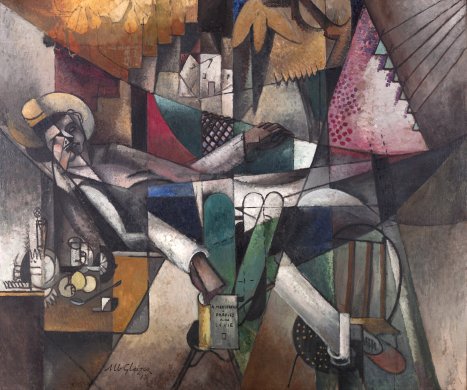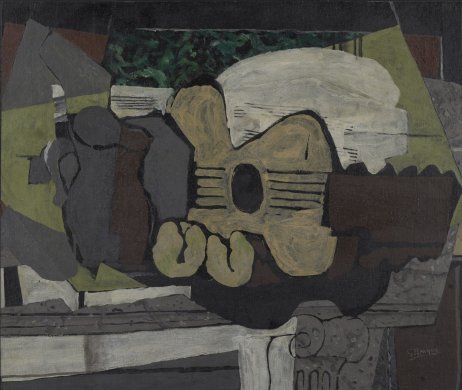Throughout his lifetime, Pablo Picasso moved in and out of many social circles. His closest friends included some of the greatest creative minds of the early twentieth century. Many of the works in Picasso: The Artist and His Models highlight how the artist’s personal relationships not only influenced his compositions but also helped steer the ever-changing course of his career.
Man Ray and Pablo Picasso met in 1921 after Ray moved from the United Stated to Paris, settling in the artist-centric neighborhood of Montparnasse. Picasso was inspired by Ray’s recent invention of the “rayograph,” a photograph made without a camera by placing objects directly on photosensitized paper and exposing it to light. Ray’s desire for experimentation is also present in earlier works, such as Symphony Orchestra. This composition is made up of simple adjoining shapes and lively colors, yet it retains significant representational elements; a grand piano, musical staff, and stringed instruments are all discernable. During World War II (1939–45), Ray was forced to return to the United States, and he soon lost touch with Picasso. In the early 1950s, he moved back to Paris and immediately sought to reestablish his friendship with the artist.
